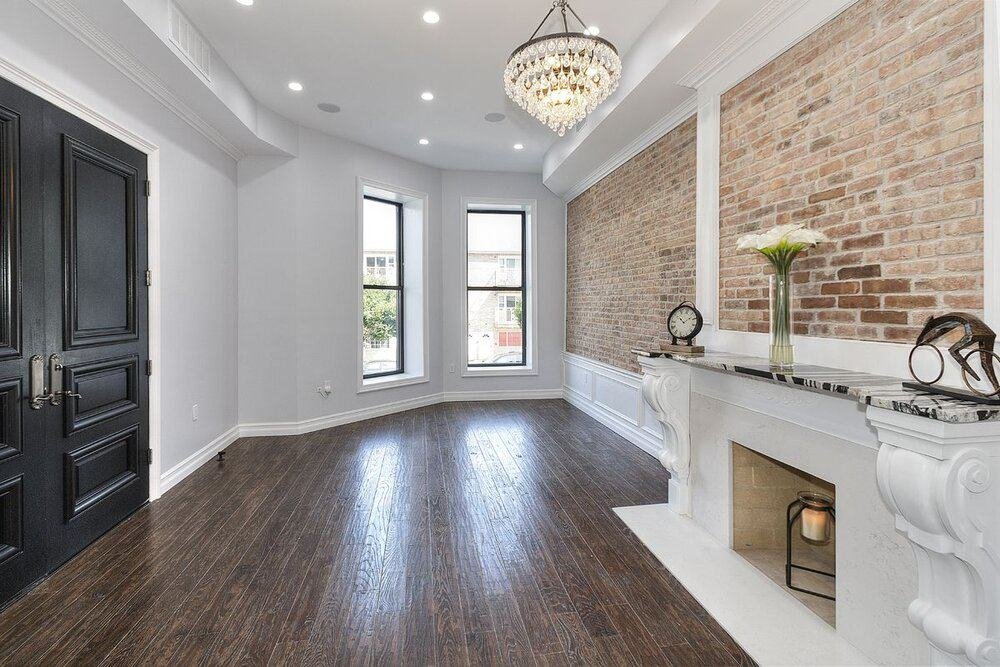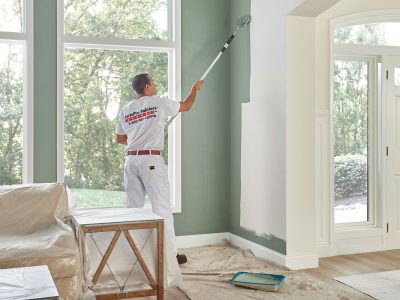Color Consultation in Lakewood: Expert Advice for Perfectly Coordinated Interiors
Color Consultation in Lakewood: Expert Advice for Perfectly Coordinated Interiors
Blog Article
Enhance Your Interior Decoration With Comprehensive Shade Assessment
The combination of color examination right into indoor style provides an one-of-a-kind possibility to improve and raise the aesthetic and emotional resonance of a space. By involving with a seasoned color expert, you can navigate the complexities of shade choice, guaranteeing that your options not just complement building features yet additionally reverberate with individual style and psychological effect.
Advantages of Shade Assessment

In addition, shade assessment aids in making the most of all-natural light and maximizing spatial perception. Lighter colors can make a room appear more large, while darker tones produce an intimate setup. Cleveland Metro Painting Specialists. This strategic application of shade can substantially influence the overall atmosphere of any kind of interior space
Additionally, expert consultants possess a comprehensive understanding of classic classics and present fads, making sure that the selected shades will remain appealing over time. This foresight can conserve customers from expensive redesigns in the future. Color appointment encourages customers by supplying them with a clear vision and direction, cultivating self-confidence in their style choices and inevitably leading to a more enjoyable and effective interior design end result.
Recognizing Shade Psychology
The value of shade psychology in indoor style can not be overemphasized, as it explores the emotional and mental impacts that numerous shades can stimulate in individuals. Colors can influence mood, actions, and even productivity, making them a crucial factor to consider in any design job.
For circumstances, warm colors such as red, orange, and yellow are usually connected with energy and heat. They can stimulate feelings of enjoyment and comfort, making them appropriate for social rooms like living cooking areas or areas. Conversely, great shades like blue, environment-friendly, and purple often tend to stimulate peace and tranquility, making them optimal for bedrooms or meditation locations.
Furthermore, using neutral tones can create a balanced environment by permitting the bolder shades to stick out without overwhelming the senses. Understanding these mental effects enables designers to develop areas that not just look cosmetically pleasing but also promote emotional health.
Including shade psychology into indoor design includes a thoughtful choice of tones customized to the intended feature of each room, eventually improving the total experience for its residents. This understanding is critical for accomplishing a harmonious and useful interior atmosphere.
The Shade Wheel Clarified
Understanding the relationships in between hues is essential for reliable interior decoration, and the shade wheel works as a beneficial device in this procedure. The color wheel, created by Isaac Newton in the 17th century, shows the spectrum of shades organized in a circular style. It makes up primaries-- learn the facts here now red, blue, and yellow-- that can not be developed by blending various other shades. Secondary shades, created by integrating primaries, consist of green, orange, and purple. Tertiary shades arise from mixing a key and an additional color, leading to colors such as red-orange and turquoise.
The shade wheel assists designers This Site realize the partnerships in between shades, including corresponding, analogous, and triadic schemes. Complementary colors, located opposite each various other on the wheel, develop lively contrasts that can invigorate a space.
Making use of the color wheel in interior style not only boosts aesthetic charm but likewise stimulates certain emotions and ambiences, making it an important referral for color examination. Recognizing these partnerships inevitably equips designers to develop areas that are both practical and aesthetically exciting.
Selecting the Right Combination
Often, picking the best combination is a crucial consider achieving an effective interior style task. A well-chosen color pattern can merge an area, improve its attributes, and evoke preferred emotions. To begin, think about the function of the area. Various spaces offer varied features and require combinations that reflect their designated use; as an example, peaceful colors such as soft blues or environment-friendlies function well in bedrooms, advertising leisure.
Next, take into account the natural light offered. Light can significantly modify exactly how colors show up, so it is vital to evaluate the room at various times of the day. Furthermore, take into consideration existing building components and home furnishings. An unified combination needs to match these features, creating a natural look throughout the space.
When choosing shades, use the 60-30-10 policy, which recommends that 60% of the room need to be a leading why not look here color, 30% an additional shade, and 10% an accent shade. This ratio ensures balance and aesthetic rate of interest (Cleveland Metro Painting Specialists). Lastly, sample colors on the wall surfaces prior to committing, as this enables you to see how the shades interact with one another and the general ambiance they create in your interior decoration task.
Collaborating With a Color Specialist

When dealing with a shade expert, the procedure usually starts with an initial appointment. During this conference, you'll discuss your vision, preferences, and the existing components in your space. The expert will certainly examine your demands and may recommend certain color palettes that align with your objectives.
After establishing an instructions, the specialist will certainly give samples and aesthetic help to aid you imagine the suggested color pattern. This step is critical, as shades can appear in a different way under varying lighting problems.
Additionally, a color consultant can assist you in choosing corresponding home furnishings, artwork, and accessories to harmonize with your picked scheme. By teaming up very closely, you can accomplish a polished visual that elevates your insides and produces a welcoming atmosphere. Ultimately, the proficiency of a color specialist can significantly enhance the overall impact of your style project.
Final Thought
In summary, comprehensive color appointment serves as a vital device for enhancing indoor style. By leveraging expert expertise of color psychology and spatial characteristics, a tailored shade scheme can be created to evoke specific feelings and create a harmonious environment.
By engaging with a skilled shade expert, you can navigate the intricacies of shade selection, guaranteeing that your choices not just enhance building attributes however likewise resonate with personal design and psychological impact. It consists of main shades-- red, blue, and yellow-- that can not be developed by mixing other colors.The color wheel aids developers grasp the relationships between colors, consisting of complementary, similar, and triadic plans.When selecting shades, use the 60-30-10 guideline, which recommends that 60% of the room need to be a dominant color, 30% an additional color, and 10% an accent shade. By leveraging professional understanding of shade psychology and spatial dynamics, a tailored shade scheme can be created to evoke particular feelings and develop an unified environment.
Report this page